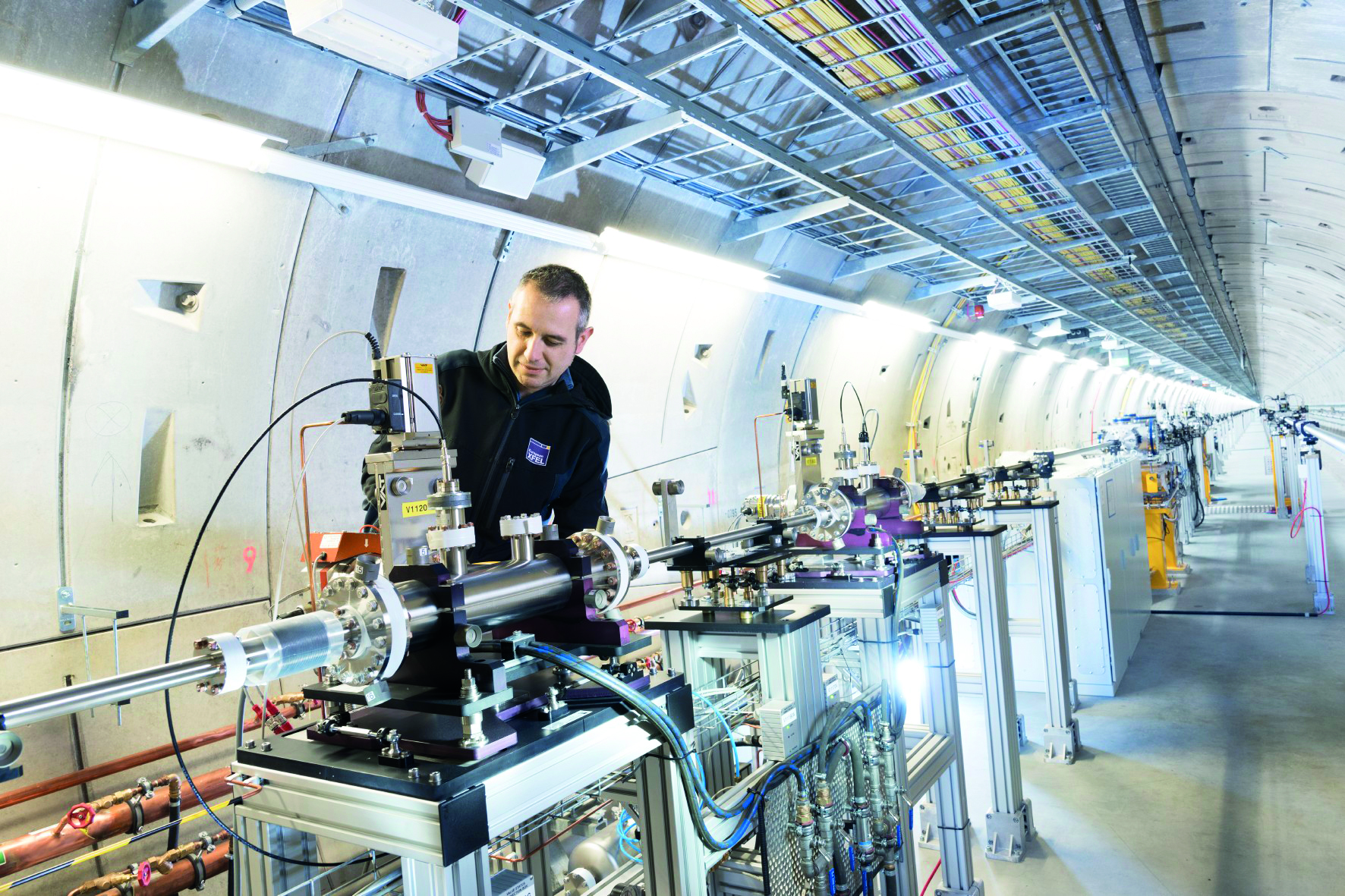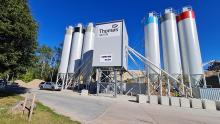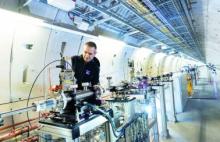
State-of-the-art concrete plant models are in big demand globally. Guy Woodford reports.
The Müller construction company may be headquartered at Weiding near Cham in Germany’s Upper Palatinate region, but it is renowned far beyond the borders of the region for its high-quality general construction and civil engineering work as well as turnkey projects. The firm’s owner’s, the Müller family, have also set up a specialist company – SMM Sonderbau – a prefabrication plant enterprise devoted entirely to the manufacture of concrete and brick-concrete products. As part of its growth strategy, the Müllers decided to purchase a stationary CBS 110 SL Elba concrete mixing plant from
Michael Müller is joint CEO of the prefabrication plant enterprise alongside his father, Helmut Müller. Michael saw the investment in an Ammann concrete mixing plant as the logical next step in the company’s development: “Our company specialises in standard and high-grade concrete varieties, and we mainly produce beam systems, bunker silage pads, lintel systems and special concrete components, double walls, precast floor/ceiling slabs and thermal (sandwich) wall panels. These products are used in garden construction and landscaping work, for example, and also in large commercial and industrial buildings. Now we simply produce our own fresh concrete for our prefabrication plant – which makes us independent of suppliers. Self-collectors can also buy their concrete fresh from our plant. This gives us a concrete turnover volume that we can handle comfortably with the new mixing plant.”
Another decisive argument in favour of this Ammann feeder plant was said to be its exceptionally robust, galvanised modular design. The ‘construction kit’ principle allows customers to equip their plant with additional specialised features. For example, the Ammann CBS 110 SL Elba has a frequency-controlled mixer drive that positively impacts mix qualities and concrete varieties. The single-shaft mixer used in the plant for this purpose has proven to be exceptionally durable and robust in practice. Furthermore, the mixer ensures that mix qualities for each concrete variety conform to recognised industry-wide standards.
The shaft is the main wearing part in the mixer. To ensure a significantly longer service lifetime for this component, Ammann Elba has developed its Elba Wear Protection (EWP) for this specific purpose. For instance, the EWP prevents liquid concrete escaping from worn gaskets, which could damage the bearings.
Helmut and Michael Müller worked with Ammann to equip their Ammann CBS 110 SL Elba with an integrated high-pressure mixer cleaning system and two swivelling hoppers with separate control: one of the hoppers ensures safe and clean loading of fresh concrete for self-collectors, while the other contains cleaning water and dirty water. This is needed for the daily cleaning by the integrated high-pressure cleaning system. Generously dimensioned platforms provide easy access to the individual modules, so thorough cleaning and maintenance is ensured with safety and convenience. These features maintain the plant’s performance in terms of concrete quantity and quality. There are also benefits for the staff: because the plant is in perfect condition, workplace safety is guaranteed and the mixing engineer needs less time to carry out his work.
Michael Müller said: “Both the Ammann Elba brand and the single-shaft mixer enjoy an excellent reputation in our industry. Especially when it comes to producing special varieties such as SCC (self-compacted concrete) and UHPC (ultra-high performance concrete), the combination of an Ammann plant with the frequency-controlled mixer drive is working extremely powerfully – and that was precisely the kind of plant we needed. Ammann offered us excellent and fair advisory support from the planning and purchase phases through to integration into our local site situation. Based on overall performance, I would always recommend an Ammann Elba concrete mixing plant to others.”
Thomas Cement, a subsidiary of
The new terminal was inaugurated on 22 November 2017 with guests from the Port of Uddevalla, the Uddevalla Municipality as well as customers of Thomas Cement.
The terminal enables the company to increase efficiency, improve customer service and reduce the transport needs, thus becoming more environmentally friendly. The terminal is strategically important for the group’s Swedish subsidiary Thomas Betong, which last year acquired four concrete plants in the Sörmland province and three plants in the Gothenburg region.
“Thanks to the new plant structure and the terminal in the Port of Uddevalla, we are now well equipped to meet our customers’ growing demand for high-quality concrete,” says Hans Karlander, president and CEO for the Thomas Concrete Group. “Gothenburg is particularly important for us because in coming years, major infrastructure projects will be conducted in the city.”
The group now has three terminals in Sweden: in Landskrona, Oxelösund and Uddevalla. They are operated by Thomas Cement, a trading and distribution firm offering alternative binding materials for the Swedish market. The terminal is thus creating even better conditions in which Thomas Betong can continue to offer the market concrete products with less environmental impact. The company previously launched Thomas Miljöstomme, an innovative construction system with 30% less CO2 footprint.
Turkish company ELKON, the long-time biggest supplier of concrete batching plants to Russia, has supplied a variety of equipment for the Akhmat Tower project in Grozny, Chechnya.
Named after the first president of the Chechen Republic, Akhmat Haji Kadyrov, and due to be completed in 2020, Akhmat Tower will be the highest building in Europe – at 435m. It will consist of 100 floors and incorporate offices, apartments, a 5-star hotel, parking, a museum, and public spaces.
The huge building is being built in an earthquake zone, so very strict technical specifications must be fulfilled at every stage of the project. The construction company undertaking the project also has to pour 17,000m³ of heavyweight concrete every three days. The size and technical requirements of the build are said to have led its lead construction firm to opt for ELKON equipment, with the manufacturer already having installed and commissioned almost 1,000 of its high-quality and robust concrete batching plants in Russia.
For the Akhmat Tower project, ELKON has supplied two ELKOMIX-120 Quick Master and three ELKOMIX-135 Quick concrete batching plants. The project’s lead construction firm is aiming to have a concrete batching plant fleet that can provide precise weighing of the chemical additives and at least 250m³ of high quality concrete/hour. The twinshaft mixers of the supplied ELKON concrete plants were manufactured by automated welding robots in the company’s manufacturing facility. For this project, the mixers of the ELKOMIX-135 Quick Master compact concrete plants were equipped with special pallets to be used in the production of heavyweight concrete.
In addition to the five new batching plants ordered, ELKON MOBILE MASTER-60 Bear and MOBILE MASTER-60 Pegasus mobile concrete batching plants had already been purchased by the same building company for the Akhmat Tower project.
High-performance concrete from
The European XFEL generates extremely intense X-ray flashes that are used by researchers from all over the world. The flashes produced in underground tunnels allow scientists to map atomic details of viruses, film chemical reactions, and study the processes in the interior of planets. LafargeHolcim, through its local company Holcim Deutschland, delivered specialist concrete for the facility’s extensive underground tunnel system including easy-to-pump heavy concrete for radioprotection and underwater concrete.
LafargeHolcim’s concrete engineers also developed special concrete mixes specifically for European XFEL. These fulfilled the building contractor’s requirements for reduced content of aluminium, natrum, silica and magnesium, which can traditionally be found in concrete and could have interfered with the highly sensitive measurements. Some concrete mixes, for instance, required the use of special limestone chippings to deliver particularly low silica levels. Together with the contractor, the group carried out extensive chemical and physical tests for every concrete mix to ensure the highest performance levels for the project were reached.
LafargeHolcim also developed an integrated logistics solution for the European XFEL. As part of the concept the group had to make sure that deliveries complied with strict traffic, dust and noise regulations.
Today, with its global R&D centre in Lyon, France, and building on the extensive tunnelling expertise available in the group, particularly in Switzerland, LafargeHolcim is perfectly placed to support architects and engineers by delivering construction materials to handle the specifications of technologically challenging projects all over the world.
Four innovative Carmix 3500 TC off-road mobile concrete mixers have been put to work successfully at the Concheño Mine in Mexico, run by Minera Real de Angeles. The silver-gold open pit and underground mine in the state of Chihuahua was opened in 2013 and can produce 15,000tonnes of material/day. Minera Real de Angeles opted for the quartet of Carmix 3500 TC machines for the construction of new mine access roads.
“The great productivity of the 3500 TC is a key factor for working in wide worksites like the Concheño Mine. This new machine is performing excellently in terms of versatility and flexibility and can work in difficult environments,” said Luis Antonio Herrera Amante, Carmix specialist for Carmix Tracsa dealer – CAT Rental Store.
The reliability of Carmix machines was already well known to the Minera Real De Angeles staff, having worked with a 3.5 TT concrete mixer truck in the mine for almost two years.
The new Carmix machines at Concheño Mine are travelling on very bumpy dirt roads with 20° to 30° slopes, in a particularly humid microclimate. The new 3500 TC machines are said to have proved an efficient, safe and comfortable solution for operators looking to reach even the most inaccessible areas of the mine. Moreover, they have helped to increase the site’s concrete productivity and speed up the work on the mine’s access roads.
MPA CALLS FOR SWIFTER ACTION TO REGULATE SOME OF THE LARGEST CONCRETE TRUCKS ON UK ROADS
The
In a recent press statement, the MPA said: “Due to a legal loophole, volumetric concrete mixers are operating on our roads with no effective weight limits, with no safety limits on the hours worked by drivers and without any requirement for the operators of these vehicles to hold operator licences and be regulated by the Traffic Commissioners. Volumetric concrete mixers operate on public roads delivering 6 million tonnes of concrete annually to construction sites throughout the UK. In contrast, HGVs delivering concrete (the familiar truck-mixers with rotating drums) and other construction materials are fully regulated as HGVs.
“The legal loophole means that these vehicles typically operate to weights of over 40 tonnes (compared with 32 tonne limits for equivalent HGVs) and drivers are subject to none of the stringent drivers’ hours and working time rules required for HGV drivers. There is no requirement for drivers of volumetric concrete mixers to keep any records of time worked and there is even some doubt if these drivers even require HGV licences. If an HGV operator flouts HGV regulations or drivers hours rules, they can have their operator licence suspended or removed by the Traffic Commissioners, potentially putting them out of business, but volumetric concrete mixer operators are not subject to such regulation. There is also a significant risk that rules being introduced which will limit harmful emissions by HGVs, notably the forthcoming Ultra Low Emission Zone in London, will not be applied to volumetric concrete mixers as they are “legally” not HGVs.
“There are between 500 and 1000 volumetric concrete mixers operating in the UK. In some cases responsible operators within the MPA operate them in accordance with HGV and drivers’ hours rules. However, the rapid growth in the number of these vehicles on our roads in recent years has been due to their use by operators who do not want to be restricted by HGV weight limits, drivers hours or working time limits or regulation by the Traffic Commissioners and have been involved in a series of legal cases to preserve the loopholes enabling their lack of regulation.”
The MPA says it has made representations to every transport minister since 2010 calling for volumetric concrete mixers to be subject to the same level of regulation as HGVs, because to all intents and purposes, they are HGVs. “The department for Transport has now acknowledged that further regulation is required but to date proposals are inadequate. The Department is currently proposing that operators of volumetric concrete mixers should be required to hold operator licences in the future but there is no commitment yet on timing, nor to extending HGV drivers’ hours or working time limits to the drivers of volumetric concrete mixers. Government has also proposed that volumetric concrete mixers should be allowed to operate at weights 20% higher than HGV limits until 2032, but there needs to be a much earlier convergence of volumetric and HGV weight limits.”






